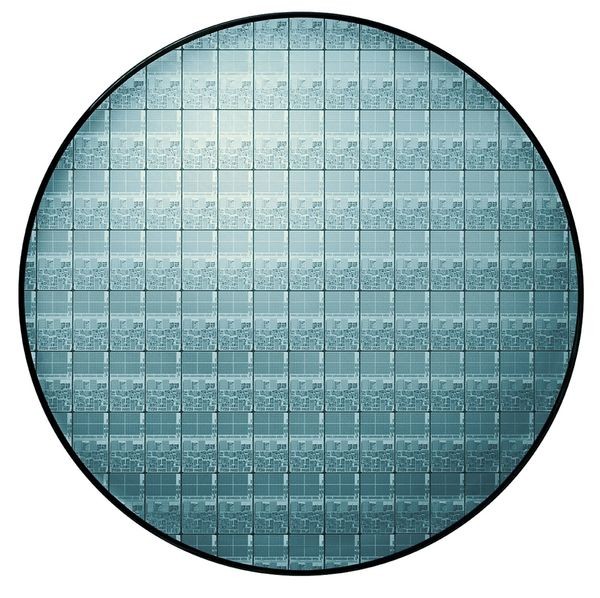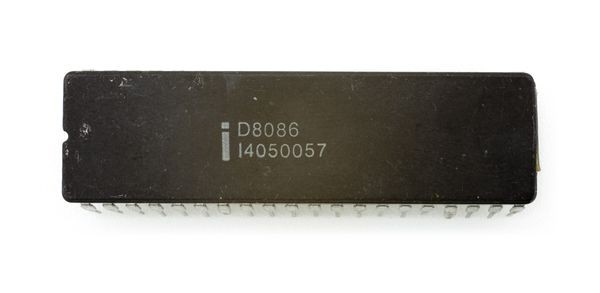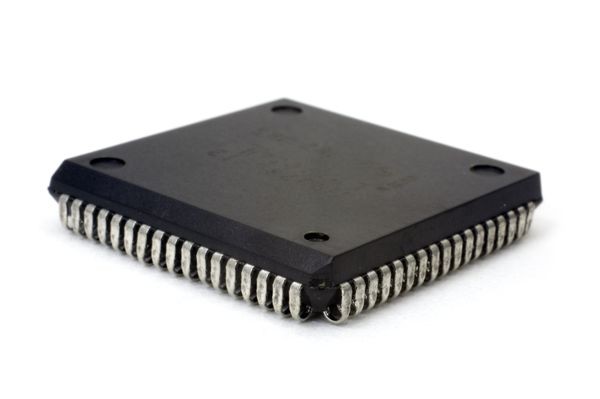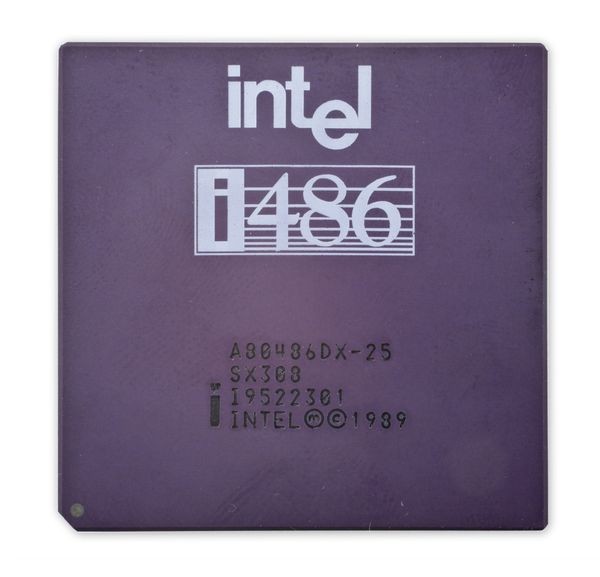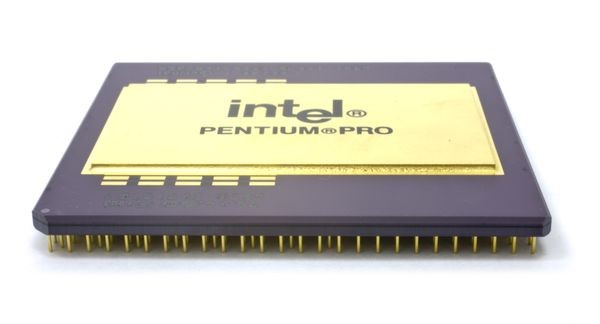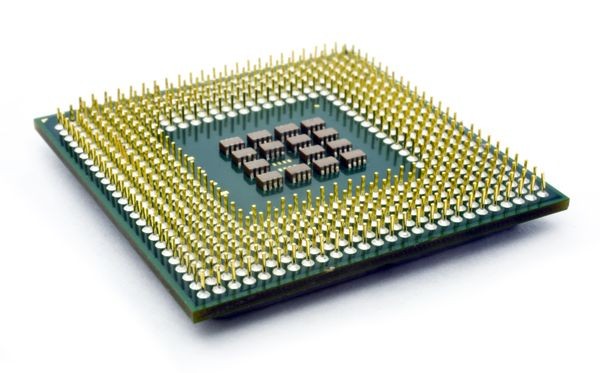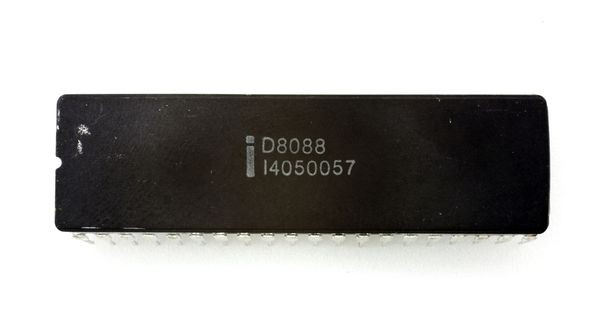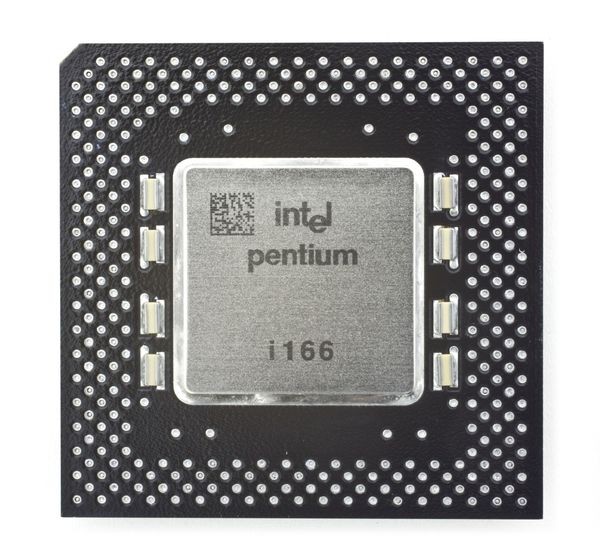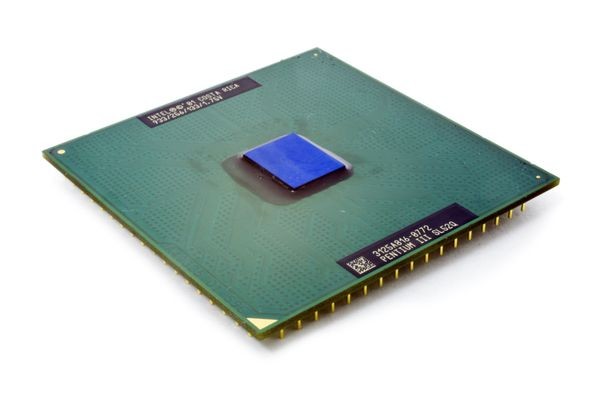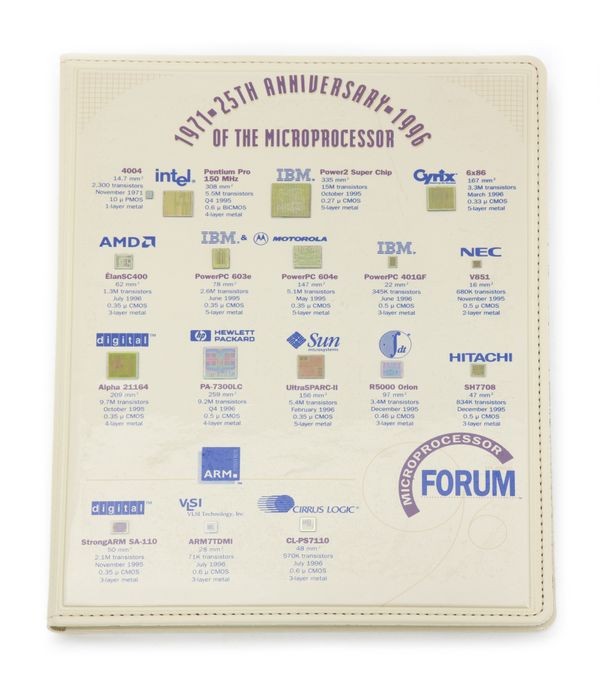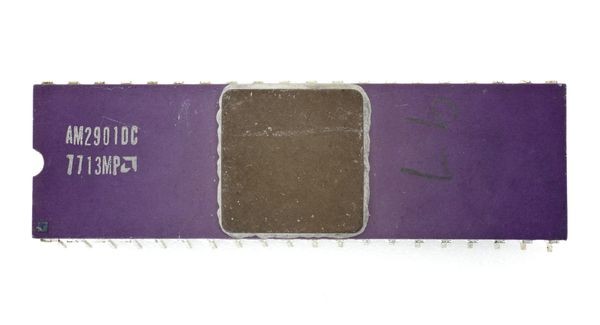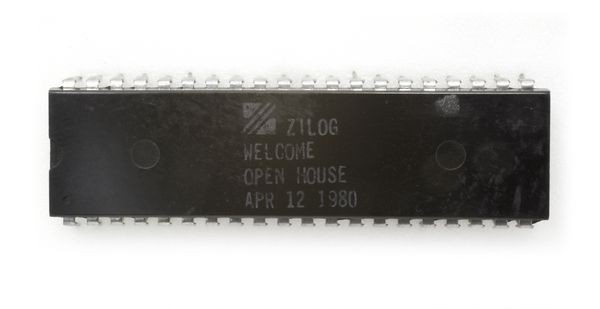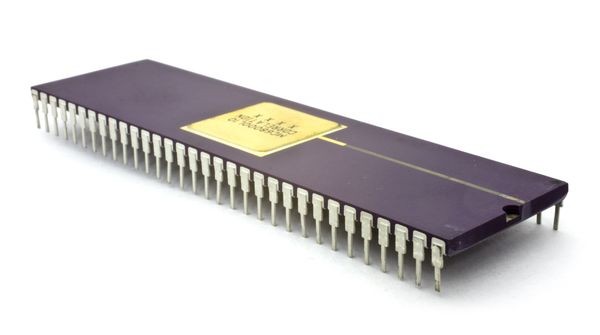Intel “x86” Family and the Microprocessor Wars
Xeon wafer
This 300 mm wafer holds 94 Xeon x86-compatible microprocessors. The Xeon processor was designed for server, workstation and embedded system markets.
Intel and the “x86” Microprocessor Family
More is never enough. As cheaper memory encouraged bigger programs, 8 bits became insufficient.
Intel developed the 16-bit 8086 as a stopgap while it worked on a more sophisticated chip. But after IBM adopted the 8088, a low-cost version of the 8086, the stopgap became an industry standard.
Intel’s 80386 later extended the architecture to 32 bits.
Generations of the Intel x86 Family
Shown below are generations of Intel microprocessors derived from the original 8086 architecture. As the number of bits in the CPU increased from 16 to 32 to 64, the number of input/output and power supply leads and the power consumption of the chip increased resulting in significant increases in the size and complexity of the packages.
8086 microprocessor, Intel, 1976
Transistor count: 29,000. Minimum feature size: 3.2 µ (microns).
View Artifact Detail80286 microprocessor, Intel, 1982
Transistor count: 134,000. Minimum feature size: 1.5 µ.
View Artifact Detail80486 microprocessor, Intel, 1989
Transistor count: 1,200,000. Minimum feature size: 0.8 µ.
View Artifact DetailPentium Pro microprocessor, Intel, 1995
Transistor count: 3,100,000. Minimum feature size: 0.35 µ.
View Artifact DetailPentium 4 microprocessor, Intel, 2000
Transistor count: 42,000,000. Minimum feature size: 0.09 µ.
View Artifact Detail8088 microprocessor, Intel, 1979
Low cost version of the 8086, with an external 8-bit data bus and internal 16-bit data paths.
View Artifact Detail80386 microprocessor, Intel, 1985
Transistor count: 275,000. Minimum feature size: 1 µ.
View Artifact DetailPentium microprocessor, Intel, 1993
Transistor count: 3,100,000. Minimum feature size: 0.6 µ.
View Artifact DetailIntel Pentium III microprocessor, 1999
Transistor count: 9,500,000. Minimum feature size: 0.13 µ.
View Artifact DetailThe Microprocessor Wars
Intel’s success inspired competitors. AMD, NEC, and Nexgen pursued variants of Intel’s x86 devices. Others, including Motorola, National, and Zilog, introduced competing architectures. Seeking higher performance and lower cost, large workstation manufacturers developed their own RISC (Reduced Instruction Set Computer) chips.
Ultimately, the x86 architecture dominated the PC market.
Microprocessor Forum '96 folder with embedded chips in cover
On the 25th anniversary of the microprocessor, the Microprocessor Forum Conference created this commemorative binder with then-current microprocessors. These were only some of the many chips vying for a slice of the Intel-dominated market.
View Artifact DetailAM2901 “bit slice” microprocessor, AMD, 1975
Multiple 4-bit 2901s could be connected together to create a wide-word computer. It was the most successful high-performance microprocessor of its time.
View Artifact DetailZ8000 microprocessor, Zilog, 1976
The Z8000 was an advanced 16-bit microprocessor with a segmented memory model, but it was overshadowed by Intel’s x86 family.
View Artifact DetailIntel advertisement
Following the introduction of the sole-sourced 80386 microprocessor, Intel discouraged customers from continuing to use the older 80286 that was also being made by other manufacturers.
View Artifact DetailM68000 microprocessor, Motorola, 1979
Intel’s most serious competitor for 16 and 32-bit applications found wide use in industrial computer and control markets.
View Artifact Detail